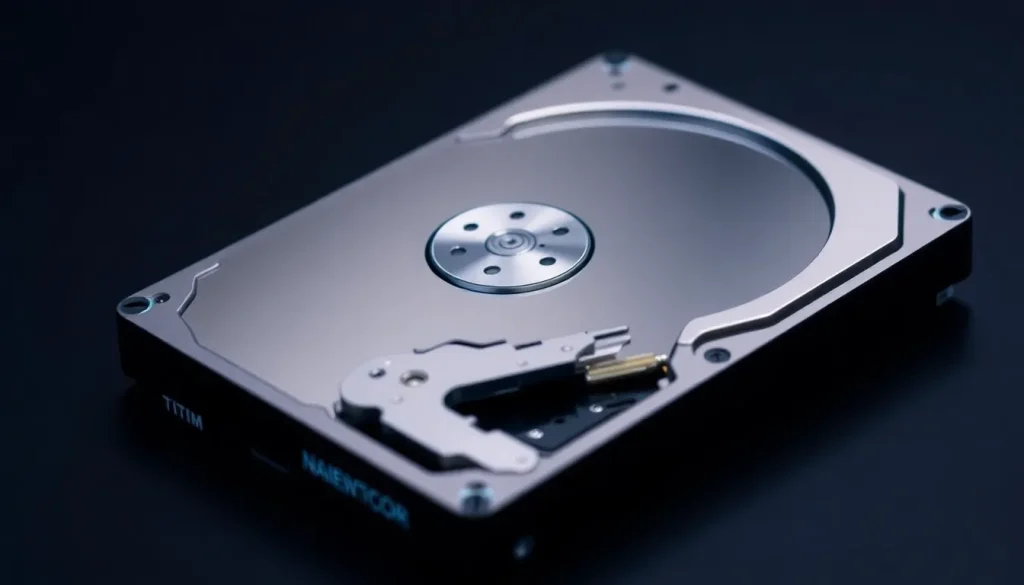Hard drive and SSD prices are set to rise significantly

If you're considering purchasing new hard drives or SSDs, now is the time to act. The prices for these storage solutions are expected to rise significantly in the short to medium term. According to a recent announcement from Western Digital, the vice president of sales and marketing, Scott Davis, confirmed this impending price increase.
The primary reason for this price hike is the high demand for storage units driven by the rapid growth of artificial intelligence (AI). Hard disk drives (HDDs) offer a more attractive cost-per-gigabyte ratio compared to SSDs, making them a crucial component of the tech industry.
Why are HDD and SSD Prices Expected to Increase?
The anticipated price increase will be gradual; however, specific figures are not yet available. For SSDs, estimates suggest a rise of between 10% and 30%, depending on the manufacturer. This trend is primarily influenced by:
- The growing demand for storage solutions in AI applications.
- The constraints in the supply chain for NAND Flash memory.
- Increased requirements for storage in data centers and servers.
For instance, SanDisk predicts a 10% increase in the cost of NAND Flash memory, while Micron may raise prices by up to 30%. This increase in NAND Flash prices will heavily impact the final prices of SSD units, as it constitutes a significant portion of their manufacturing costs.
Understanding NAND Flash Memory Prices
The price of NAND Flash memory is a critical factor in determining the overall cost of SSDs. When demand surges, such as with the current AI boom, manufacturers face higher production costs, which inevitably affects consumers. Some contributing factors include:
- Increased production costs due to supply chain disruptions.
- Greater competition among manufacturers as they strive to meet demand.
- Technological advancements that require more sophisticated memory components.
Experts predict that if the current trend continues, a significant shortage of NAND Flash memory could occur by early 2026, further inflating SSD prices.
Comparing HDD and SSD Costs
When comparing the costs of HDDs and SSDs, it's essential to consider the long-term value they provide. Currently, HDD prices are generally lower than SSD prices, primarily due to differences in technology and production costs. For example:
| Type | Typical Price Range | Cost per GB |
|---|---|---|
| HDD | $40 - $150 | $0.03 - $0.05 |
| SSD | $50 - $500 | $0.10 - $0.30 |
As seen in the table, while HDDs may be cheaper in terms of upfront costs, SSDs provide faster data access speeds and are more reliable in the long run. This trade-off is significant for users who prioritize performance and durability.
Current Market Trends for HDDs and SSDs
At present, the prices of consumer-grade SSDs are relatively reasonable, with various promotions available. For instance, many retailers are offering discounts due to back-to-school sales, making it an opportune moment for potential buyers. Some key trends in the market include:
- A rise in the adoption of SSDs for both laptops and desktops.
- Increased emphasis on data security and faster data recovery solutions.
- Innovations in SSD technology, such as PCIe 4.0 and 5.0, which enhance performance.
As consumers become more aware of these trends, the demand for SSDs is expected to continue growing, which may further impact prices.
Future Projections for Storage Prices
Looking ahead, industry analysts anticipate that the prices for both HDDs and SSDs could reach a significant peak by 2026. This projection stems from:
- The sustained demand from AI and machine learning applications.
- Potential supply chain challenges that manufacturers may face.
- Ongoing investment in data storage infrastructure by companies.
As storage technology evolves and demand remains high, manufacturers will need to balance production capabilities with market needs, impacting pricing dynamics.
For those considering upgrading or purchasing new storage solutions, it is advisable to stay informed about market trends and pricing fluctuations. The next few months could be crucial for making cost-effective decisions in the realm of computer storage.
For more insights into the differences between HDDs and SSDs, check out this informative video:




Leave a Reply